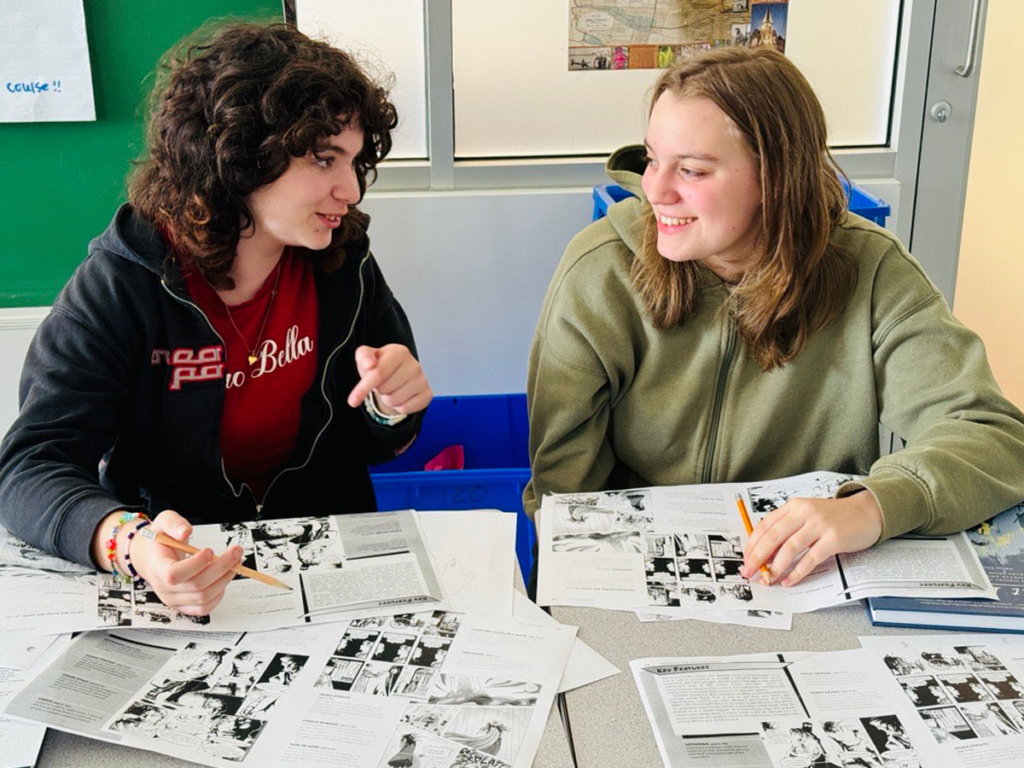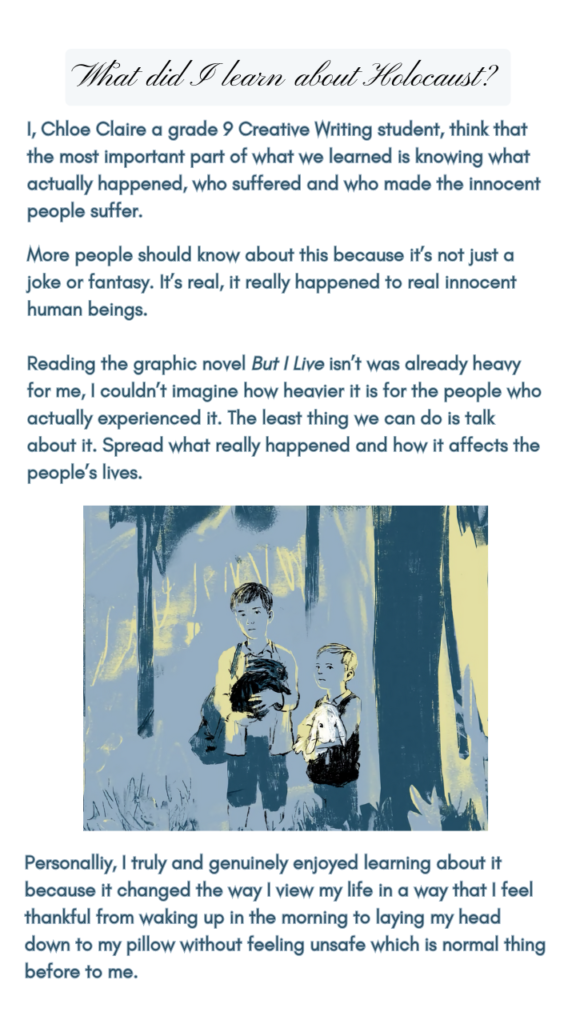Learning about the Holocaust at Vic High: Reading and Workshop by Dr. Charlotte Schallié
On October 2 & 3, SCVN Co-Director Dr. Charlotte Schallié visited a ninth/tenth creative writing class at Victoria High School (Vic High). The students, guided by their creative writing teacher, Georgina Hope, participated in an interactive lesson that brought the testimonies from ‘But I Live: Three Stories of Child Survivors of the Holocaust’ into the classroom. Through discussion of the book, Charlotte introduced the students to the ways that graphic novels can support learning by creating an emotional connection to the material.

‘But I Live’ brings together three graphic narratives that share the personal life journeys of Holocaust child survivors. These stories provide young readers with accessible and emotional insights into historical events, illuminating what it meant to survive the Holocaust as a child. By connecting with individual experiences, students were encouraged to see beyond facts and figures and understand history on a personal level.
This visit also incorporated a lesson plan from the educator’s resource created by Dr. Andrea Webb. This resource package is designed to support teachers in engaging a difficult topic such as the Holocaust, using graphic narratives as an entry point to explore context, events, and the consequences of historical trauma. This approach doesn’t simply inform—it empowers students and teachers to reflect on history and develop critical skills, such as empathy and historical awareness, which remain relevant to current societal challenges.
Some of the students later shared what they learned in their own words.
I think reading the book opened my eyes and I really felt the emotion of the book. The book was definitely a great read and I’m sure it broadened my understanding. The drawings were so well done, and the mute colours really make you feel the emotion in the book. I feel what Charlotte was talking about with the graphic novels is true. We definitely should be reading more graphic novels in high schools, because they’re easy to read, but get the point across right. I don’t feel graphic novels should be seen as childish most of the time because they carry deeper stories with good morals.
A person named Charlotte Schallié came to my class, she is a professor at UVic, and an author. She talked about how graphic novels are just as valuable as normal books. I would agree with this, I think that the pictures help portray a better story than words do. She also showed us some stuff on the holocaust. It was a graphic novel, and more specifically the process of making it. They talked to multiple holocaust survivors and had them tell their stories, in their own words and only what they wanted to say. I thought that was cool, because it seems more respectful to the holocaust survivor.
I have learned that the Holocaust has killed 6 million Jews. The injustices before, during, and after the Holocaust are innumerable. It’s sad to see such hate grow for so long and so intensely. I’ve had fun with the graphic novel project, and I enjoyed the Survivors theatre production. It’s awesome to see the Holocaust explained in a compelling way, in a way that encourages readers and viewers to be in the experiences of those we read about or watch.
I have never learned about the Holocaust until this project. I found it fascinating but also so emotional to learn about. I can’t imagine what it would have been like in that time. When Charlotte Schallié came into the classroom and told us more facts and stories about the Holocaust it was fascinating. My favourite part about this project though, was the play. I enjoyed watching the good acting, and it was a more fun way to learn about this devastating event in history. People need to know. I think that this should be learned about in class more and it was a good way to learn about it through graphic novels. The Anne Frank graphic novel, I found personally, is really hard to read, but it was good all the same.
The students participated actively, exploring graphic narratives as a storytelling medium and recognizing the power of personal narrative within historical contexts. Charlotte’s visit demonstrated how art and personal testimony can bridge generations, creating a meaningful connection to the past. Thank you to Georgina and class for your engagement with ‘But I Live.’ Experiences such as this class visit emphasize the potential wide-ranging impact of the graphic novels created by the SCVN project.

